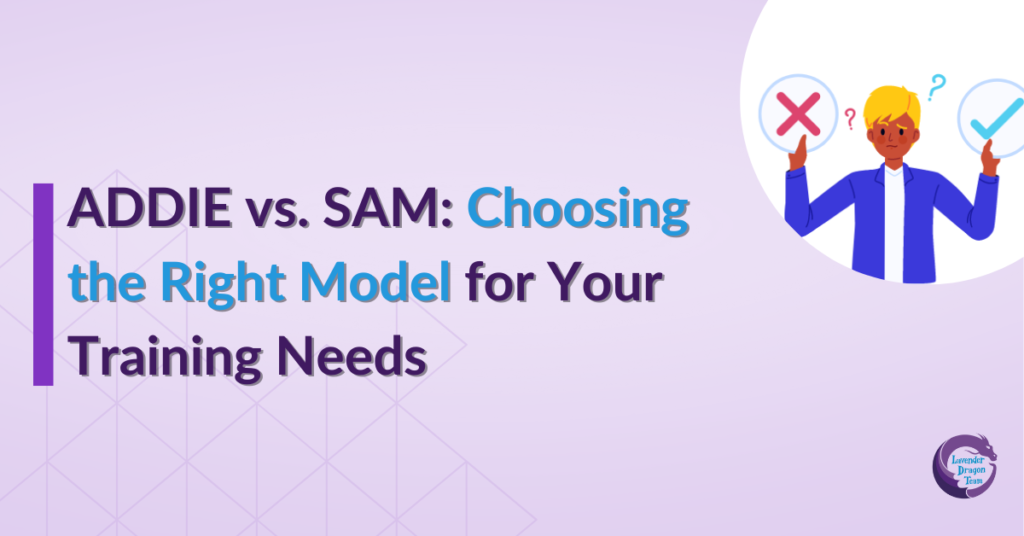When it comes to instructional design, choosing the right model can make a significant difference in the success of your training program. Today, we’re comparing two popular models in the field: ADDIE and SAM (Successive Approximation Model). Each has its strengths and specific use cases, making them suited for different types of training needs. Let’s lay down the details of each model, including their processes, advantages, and when to use them, to help you decide which might be the best fit for your next training project.

Overview of ADDIE and SAM
ADDIE (Analysis, Design, Development, Implementation, Evaluation) is a structured, sequential model that provides a comprehensive step-by-step approach to instructional design. It’s known for its systematic methodology, which involves thorough planning and a linear process.
SAM (Successive Approximation Model), on the other hand, is a more iterative and agile approach. It focuses on rapid prototyping and continual revisions, making it highly responsive to changes and immediate feedback.
Comparison Table
| Feature | ADDIE | SAM |
| Approach | Linear and systematic | Iterative and agile |
| Phases | Analysis, Design, Development, Implementation, Evaluation | Preparation, Iterative Design, Iterative Development |
| Flexibility | Less flexible, changes are harder to implement once the process is advanced | Highly flexible, changes can be incorporated at almost any stage |
| Speed | Slower due to extensive upfront planning | Faster, starts with prototyping early in the process |
| Feedback | Feedback is typically gathered at the end in the Evaluation phase | Continuous feedback throughout the process |
| Best For | Well-defined projects with clear objectives and stable requirements | Projects where requirements are expected to change or are not fully defined |
Strengths of Each Model
ADDIE
- Ideal for beginners or those who prefer a clearly defined process.
- Extensive upfront analysis helps in understanding the training needs and setting clear objectives.
- Each phase is completed before moving to the next, ensuring thoroughness and reducing the risk of issues later.
SAM
- Best for projects in dynamic environments where changes are frequent.
- Allows instructional designers and stakeholders to see and interact with training elements early in the process.
- Continuous feedback loops involve stakeholders throughout the development process, enhancing the relevance and effectiveness of training.
Use Cases for Each Model
ADDIE
- Suitable for complex training needs that require meticulous planning.
- Ideal where compliance and detailed documentation are necessary.
- Best when the training needs and objectives are unlikely to change.
SAM
- Effective for fast-paced business environments where time to market is critical.
- Useful for areas like software development where products and features evolve rapidly.
- Beneficial for projects that benefit from visual prototyping and iterative design.
Final Thoughts
Choosing between ADDIE and SAM depends largely on your project’s specific needs, the stability of your training requirements, and your team’s working style. ADDIE offers a more systematic approach with detailed steps, making it a safe choice for projects with clear, unchanging requirements. SAM, in contrast, thrives in environments that demand flexibility and fast adaptations, making it ideal for projects where user feedback and iterative testing are crucial.
Consider your project’s scope, the dynamism of the subject matter, and how much room there is for iterative development when deciding between ADDIE and SAM. Whichever model you choose, remember that the ultimate goal is to create effective, engaging, and impactful training experiences that meet the needs of your learners.

